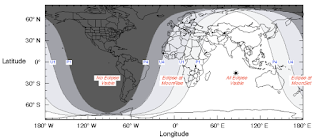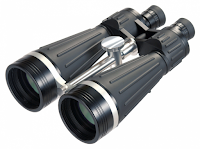
World is enlivened with a total solar eclipse that will occur in the United States on 21 August 2017. It's in America, but in Indonesia there are other events that are not less interesting that partial lunar eclipse. The astronomical event will occur 7-8 August 2017.
Partial lunar eclipses occur when the earth moves between the moon and the sun but not exactly straight in a line. When a partial eclipse occurs, a small part of the moon's surface is covered by the darkest part of the earth's core shadow or the so-called umbra. The remainder of the moon's surface is covered by the outer shadow of the earth or the so-called penumbra.
Launch Time and Date, partial lunar eclipses will occur when two astronomical events occur simultaneously. The event will occur when the moon is in full or full moon. When the earth moves between the moon and the sun but not exactly straight in one line occurs simultaneously.
However, not every full-moon partial eclipse can happen. This happens because the moon moves around the earth with a slope of orbit about 5 degrees to the Earth's orbit and the sun (ecliptic). Because of the moon's orbital tilt, not every new moon phase and full moon, the moon is exactly parallel to the earth and the sun.
Eclipses can only happen near the node point. The natural phenomenon occurs when a full moon occurs near a node, and a solar eclipse occurs when a new moon occurs near a node.
The partial lunar eclipse from 7-8 August 2017 will take place at 22:50 UTC+7 on August 7, 2017 (shown above with P1) as the Moon begins to enter the Earth's penumbral shadow. Then, a small portion of the Moon's face begins to enter the Earth umbra shadow from 00:22 UTC+7 (U1) to 02:18 UTC+7 (U4), its own peak will occur at 01:20 pm (Greatest), ie August 8, 2017.
The lunar eclipse will then end entirely when the Moon leaves the Earth penumbra shadow at 3:50 UTC+7 (P4). That way, the duration of this lunar eclipse reaches 1 hour 55 minutes with the maximum percentage of the peak of the eclipse is 24% disk tergerhanai Moon.
This partial moon eclipse event is quite safe to see with the naked eye with no tools like a binoculars or a telescope. Unlike solar eclipses that require special filtered glasses to protect our eyes from the dangers of the Sun's glare.
This partial lunar eclipse is included in the Saros 119 series and is the 62nd eclipse of a total of 83 eclipses in the series. In this case, the next Saros 119 or 63rd eclipse of the series will occur in about 18 years, precisely on 20 August 2035, which unfortunately is not visible from most parts of Indonesia.
But for partial partial eclipse 7-8 August 2017, Indonesia became one of the best locations to observe it. For those of you who happen to be out of Indonesia during a partial lunar eclipse later, do not worry, this eclipse can also be seen in most of Africa, most of Europe, all of Asia, Australia and Oceania countries.
Partial lunar eclipses occur when the earth moves between the moon and the sun but not exactly straight in a line. When a partial eclipse occurs, a small part of the moon's surface is covered by the darkest part of the earth's core shadow or the so-called umbra. The remainder of the moon's surface is covered by the outer shadow of the earth or the so-called penumbra.
Launch Time and Date, partial lunar eclipses will occur when two astronomical events occur simultaneously. The event will occur when the moon is in full or full moon. When the earth moves between the moon and the sun but not exactly straight in one line occurs simultaneously.
However, not every full-moon partial eclipse can happen. This happens because the moon moves around the earth with a slope of orbit about 5 degrees to the Earth's orbit and the sun (ecliptic). Because of the moon's orbital tilt, not every new moon phase and full moon, the moon is exactly parallel to the earth and the sun.
Eclipses can only happen near the node point. The natural phenomenon occurs when a full moon occurs near a node, and a solar eclipse occurs when a new moon occurs near a node.
Information of Partial Lunar Eclipse August 2017
Source: eclipse.gsfc.nasa.gov/LEplot/LEplot2001/LE2017Aug07P.pdf
The partial lunar eclipse from 7-8 August 2017 will take place at 22:50 UTC+7 on August 7, 2017 (shown above with P1) as the Moon begins to enter the Earth's penumbral shadow. Then, a small portion of the Moon's face begins to enter the Earth umbra shadow from 00:22 UTC+7 (U1) to 02:18 UTC+7 (U4), its own peak will occur at 01:20 pm (Greatest), ie August 8, 2017.
The lunar eclipse will then end entirely when the Moon leaves the Earth penumbra shadow at 3:50 UTC+7 (P4). That way, the duration of this lunar eclipse reaches 1 hour 55 minutes with the maximum percentage of the peak of the eclipse is 24% disk tergerhanai Moon.
This partial moon eclipse event is quite safe to see with the naked eye with no tools like a binoculars or a telescope. Unlike solar eclipses that require special filtered glasses to protect our eyes from the dangers of the Sun's glare.
This partial lunar eclipse is included in the Saros 119 series and is the 62nd eclipse of a total of 83 eclipses in the series. In this case, the next Saros 119 or 63rd eclipse of the series will occur in about 18 years, precisely on 20 August 2035, which unfortunately is not visible from most parts of Indonesia.
But for partial partial eclipse 7-8 August 2017, Indonesia became one of the best locations to observe it. For those of you who happen to be out of Indonesia during a partial lunar eclipse later, do not worry, this eclipse can also be seen in most of Africa, most of Europe, all of Asia, Australia and Oceania countries.
Information of Partial Lunar Eclipse August 2017
Source: eclipse.gsfc.nasa.gov/LEplot/LEplot2001/LE2017Aug07P.pdf






















